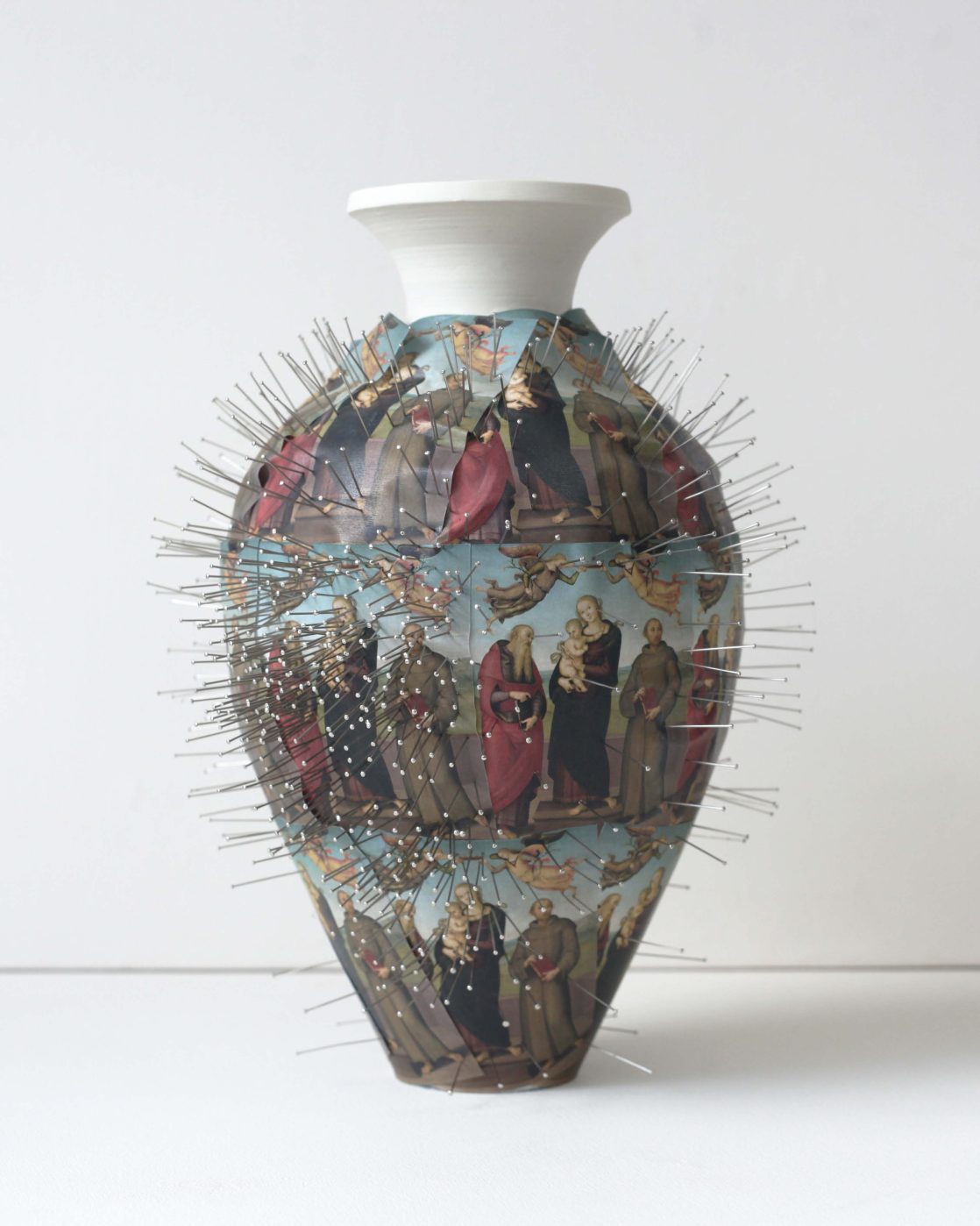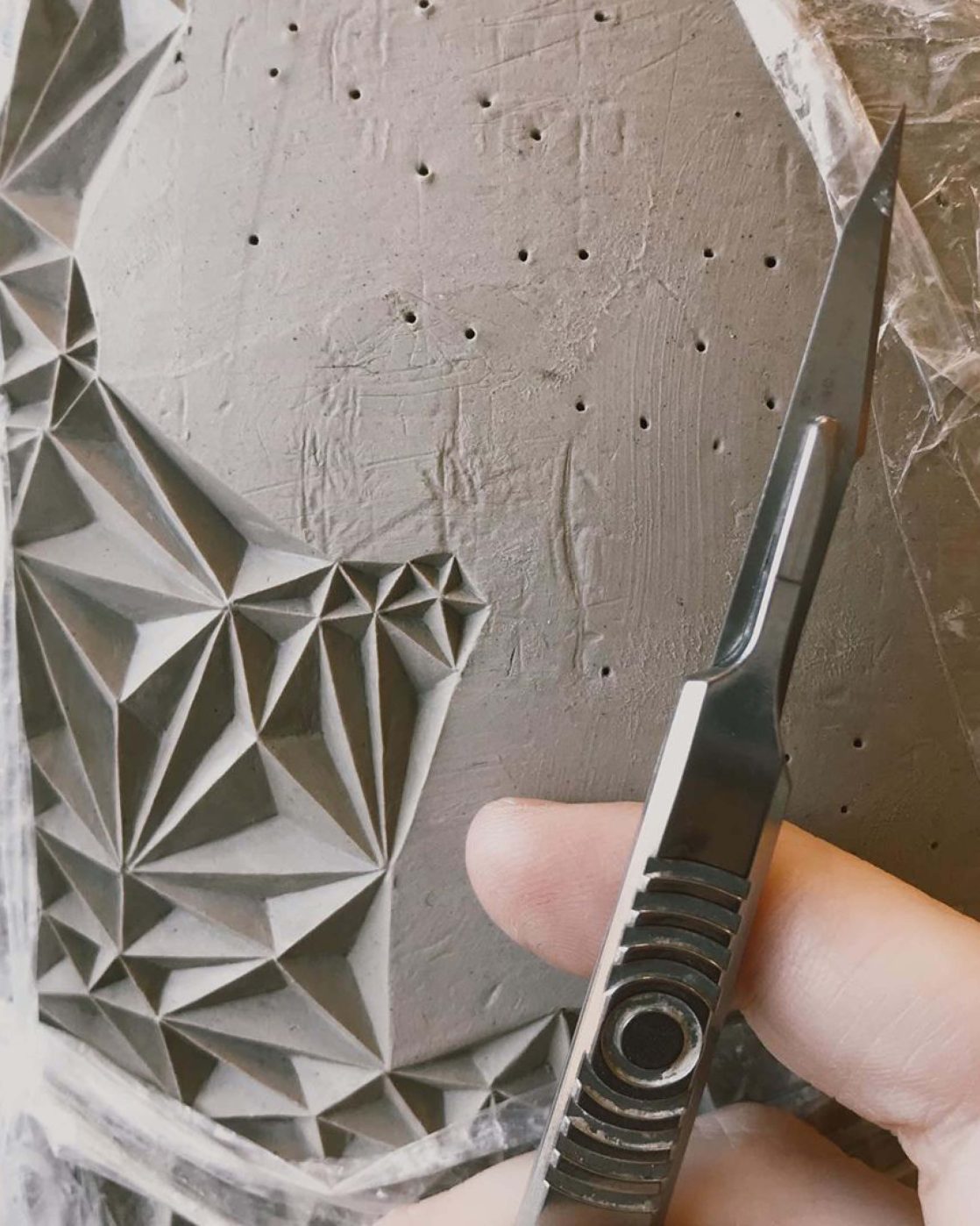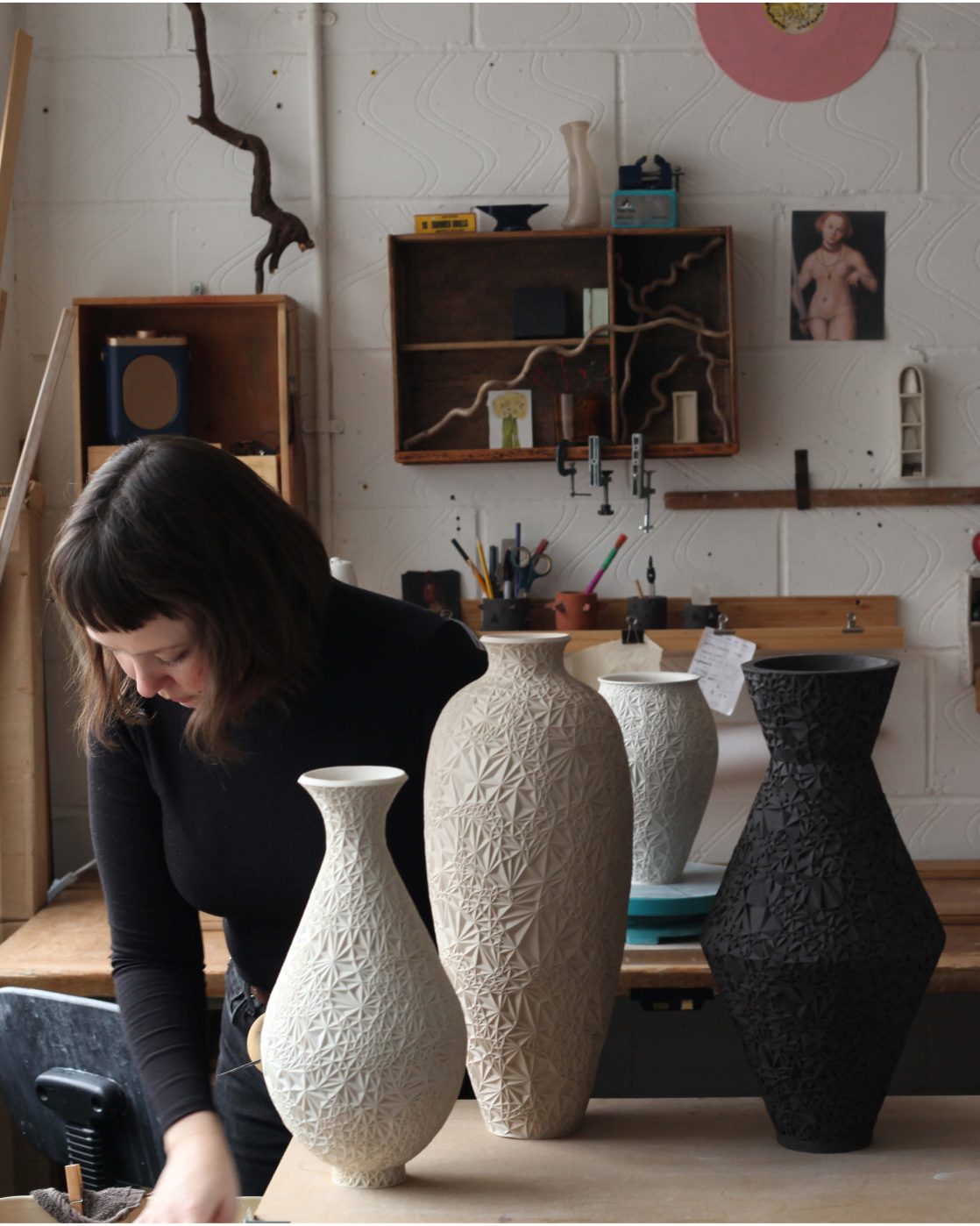Welcome to Ceramic Review
Ceramic Review is the magazine for contemporary and historical ceramics, ceramic art and pottery.
Ceramic Review Issue 334
July/August 2025
Ceramic Review is the magazine for contemporary and historical ceramics, ceramic art and pottery.
July/August 2025
Leah Jensen reveals the intricate carving behind her ‘anti-digital’ vessels

My carved pots are contemplations of the mathematics and geometry underpinning Renaissance paintings from the 14th to 17th centuries. They are rooted in an admiration for the preliminary drawings and hidden structures embedded within these masterworks. In stark contrast to their grand, visceral appearance, my pots often look as if they have been digitally fabricated though they are entirely hand-carved. I jokingly refer to this aesthetic as ‘anti-digital’.
These vessels are made using the coiling technique – a method I originally adopted out of necessity, having had no access to a wheel. Over time, this process has become integral to the identity of the work. Despite their machine-like surface patterning, it is important to me to preserve the human hand within the object. Asymmetries and imperfections remain deliberately visible – not flaws, but rather subtle reminders of the maker. Look closely and you will find clues, the coils are ever so slightly visible on the inside of the pots, telling quiet stories of their construction.
TOOLS & CLAY
My toolkit is minimal, a metal kidney, a potter’s knife, a sponge and a handful of handmade tools adapted
to reach awkward areas. To retain the crispness of the carved surfaces, I choose not to glaze the pots. Instead, I work with a variety of clays to achieve different colours and finishes. I prefer clays with little to no grog – porcelain in particular – for its ability to capture fine detail so precisely. The carving itself is done using a scalpel with frequent blade changes, though I have tried sharpening them, it is never quite the same as a fresh one.
The surface decoration of the pots is guided by a process I devised, which I call image mapping. This technique enables me to translate Renaissance paintings into geometric abstractions. Once the pot is leatherhard, I take a printed image of a painting and wrap it around the vessel, repeating the image across its surface. Using dressmaker’s pins, I puncture the paper to mark out key compositional points onto the clay. When the paper is removed, a constellation of pinholes remains – the future vertices of a triangulated surface.
The nature of the painting greatly influences the final carving. Areas of intense detail, such as drapery, facial features or ornate architecture, yield denser, more intricate patterns. In contrast, regions of sky, large areas of skin or background allow the design to breathe, resulting in more sparse and open carvings.
CARVING & PATTERNS
When I am carving, I join the pinholes as I go. I make these connections without overthinking, focusing instead on the accuracy of the lines and letting my mind wander, often drifting into ideas for new work or upcoming exhibitions. This time spent carving has become essential to both my practice and my well-being as it fosters a particular kind of mental clarity – a rhythm of repetitive labour and thought that allows creative ideas to percolate in the background. It was during these long carving sessions that I conceived a new sculpture that I am currently making for this year’s British Ceramics Biennial.


The image-mapping technique has served several purposes. Not only has it refined my technical ability by introducing complexity and constraint but it has also solved a surprisingly tricky artistic dilemma: creating truly sporadic patterns. Human brains tend to find structure, even in randomness. By relying on the visual logic of Renaissance compositions, I have sidestepped this problem to achieve patterns that I believe feel both deliberate and unexpected.
DRYING & FIRING
One of the greatest challenges in this work is managing the moisture levels of the clay, with some pieces taking over 200 hours to complete, stretched across many weeks. The pots must be kept at the perfect stage of leatherhardness – neither too wet nor too dry. This involves constant wrapping and unwrapping in plastic to maintain the ideal conditions.
Once a pot is finally finished, it is allowed to dry out slowly – an essential step to prevent cracking or warping – before it is fired to the top temperature appropriate for the particular clay body.
While these vessels might initially appear cold and machine-like, their making is anything but. They are labours of love, deeply embedded in both historical reverence and personal reflection.
For more details visit leahjensen.co.uk; @leah.jensen